The Great Newt Commute is what happens on the way to the Great Newt Party. From the first winter rains through early spring, California Newts migrate from their summer homes to their winter breeding grounds — to ponds and streams where they mate and lay eggs before trundling back up the hills and into burrows for the dry season.
It is a genuine trundle for the little newt. I snapped this photo on a trail in Tilden Park last month. Even a cluster of weeds is a formidable hurdle for the newt, so it’s an awesome feat to travel miles on this annual journey.
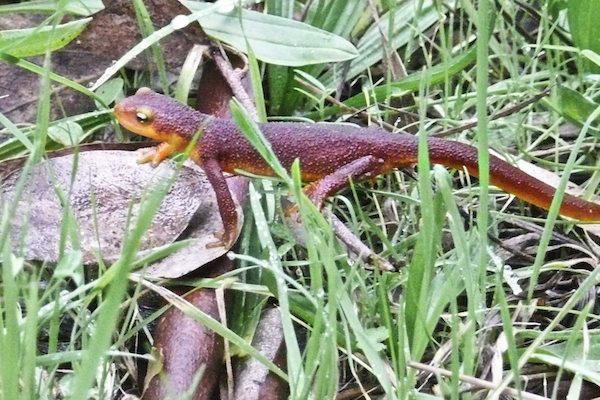
California Newt Migration in Berkeley
The Newt’s Toxic Arsenal
The California Newt is armed with a toxin that wards off predators: tetrodotoxin (TTX) — the same potent neurotoxin found in puffer fish. The adult newt, its eggs and its embryos are all protected by TTX. Tetrodotoxin packs a wallop so you don’t want to ingest it. And you don’t want to pick up a newt then have your kids play with it, as I witnessed one parent doing before I clued him in.
Be nice to newts because the effects of TTX range from respiratory distress to outright paralysis. It’s one of the ingredients in coupe poudre, or zombie juice. Only one lucky animal seems to have developed an immunity to the newt’s TTX: the garter snake . . . who won’t be joining the living dead at any point soon.
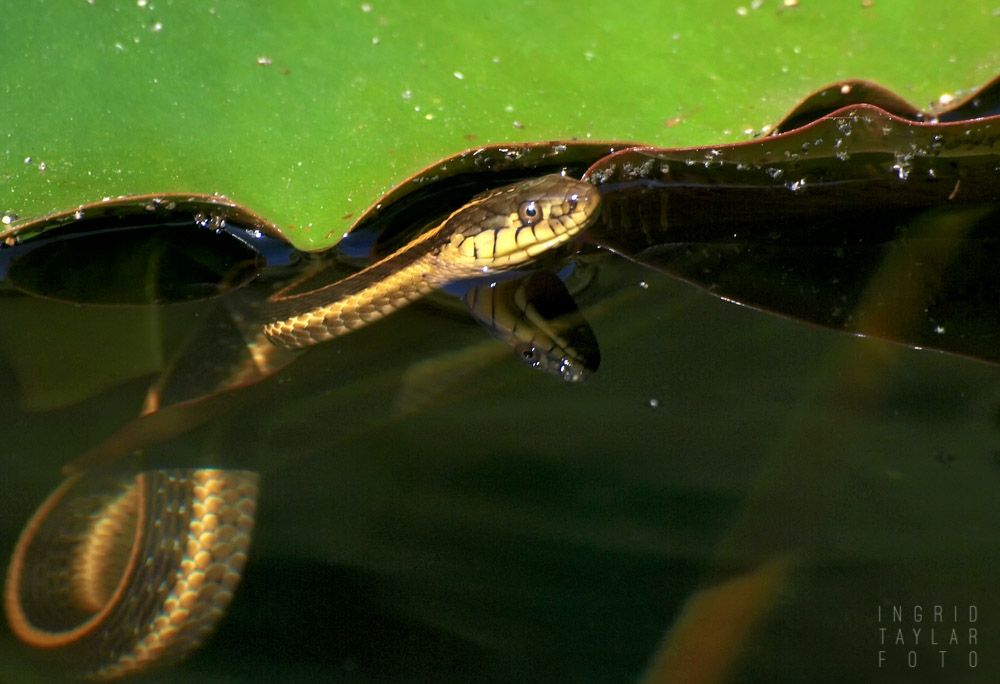
Don’t go synthesizing this based on my diagram. We don’t need any more zombies.
Newts + Cars = Not Good
Were it not for human development, the newt would be relatively free of predators on his way to meet his mate. But the car proves to be his deadliest adversary. Which is why Tilden Park now closes South Park Drive for the entirety of the newt migration season.
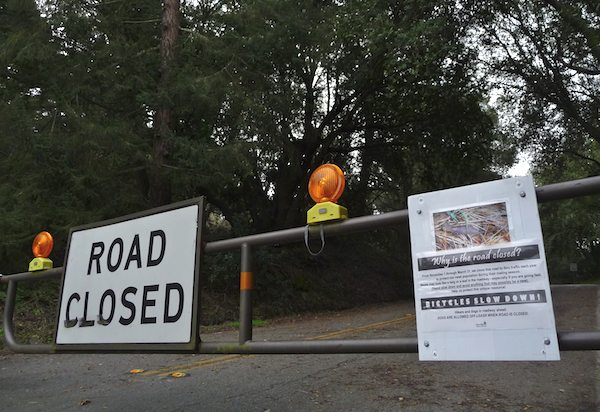
The Japanese Pool at UC Berkeley Botanical is an exceptional place to see (but not touch) newts. This is precisely the right time of year, too. The photos below (taken last week) include one shot of the newt’s eggs, within gelatinous egg masses. You’ll see loads of affectionate newts pairing up under the water lilies and at the pond’s surface.
Photos added in 2018:
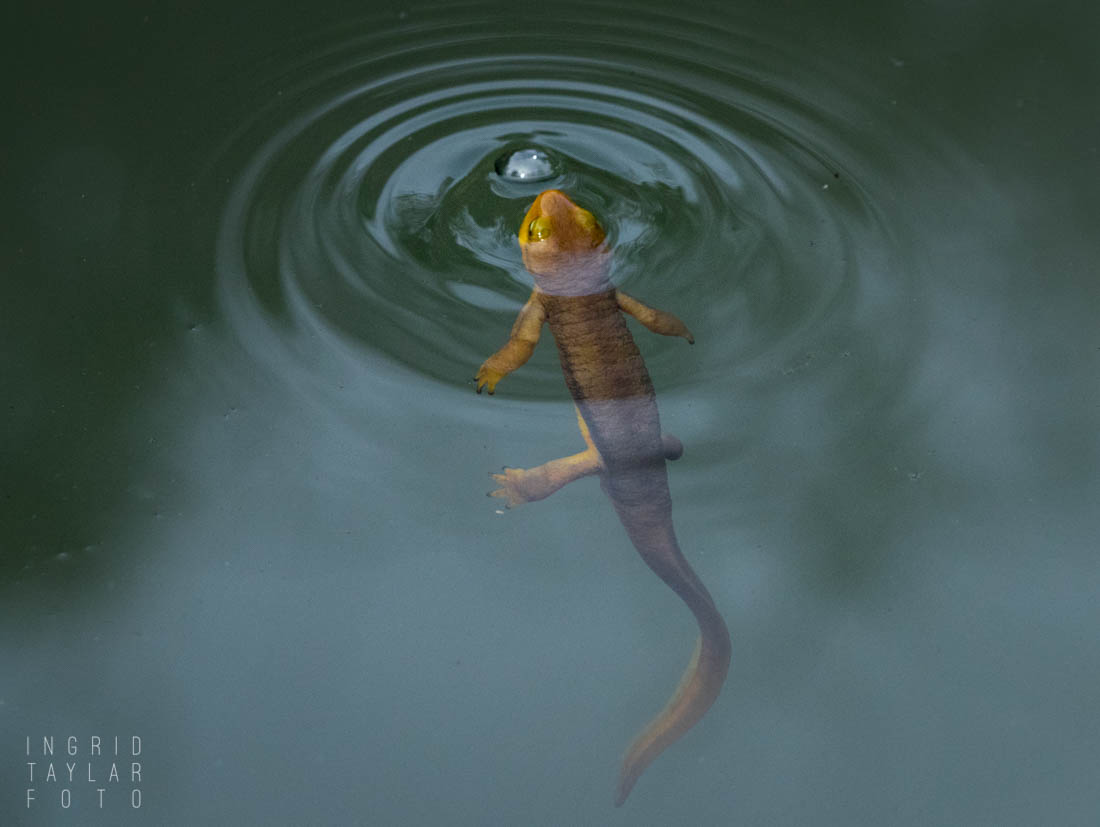
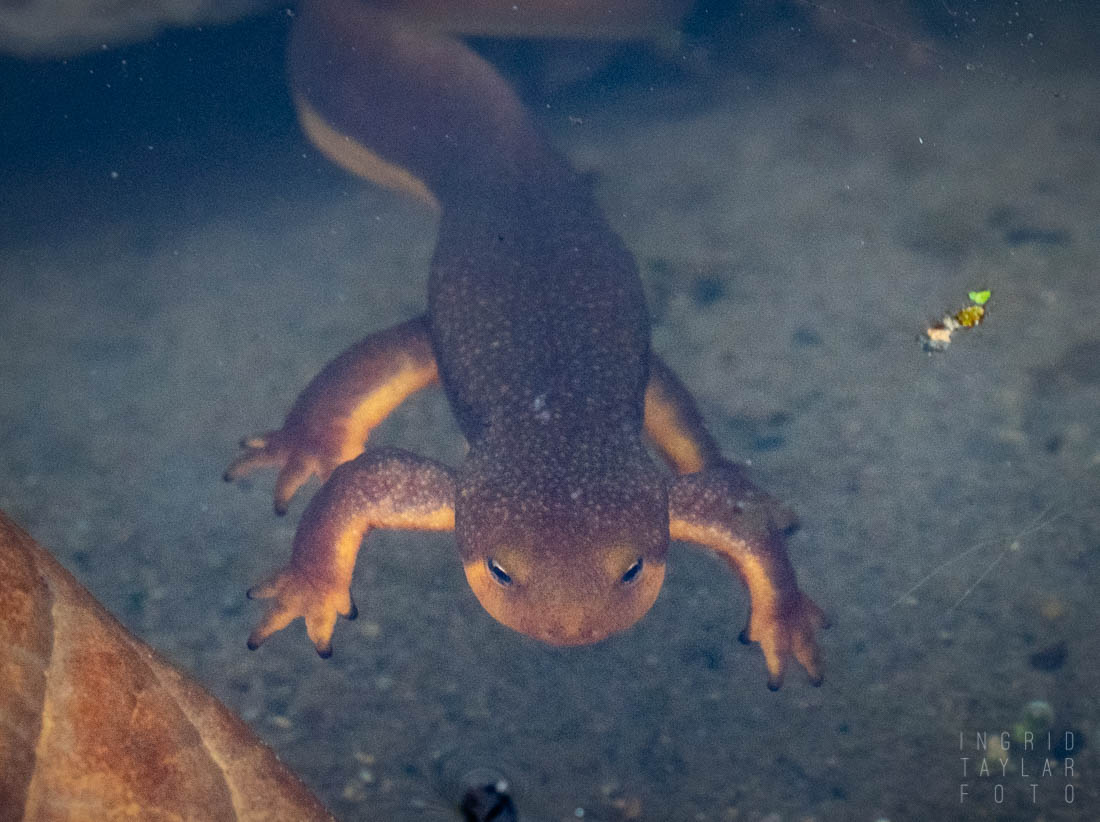
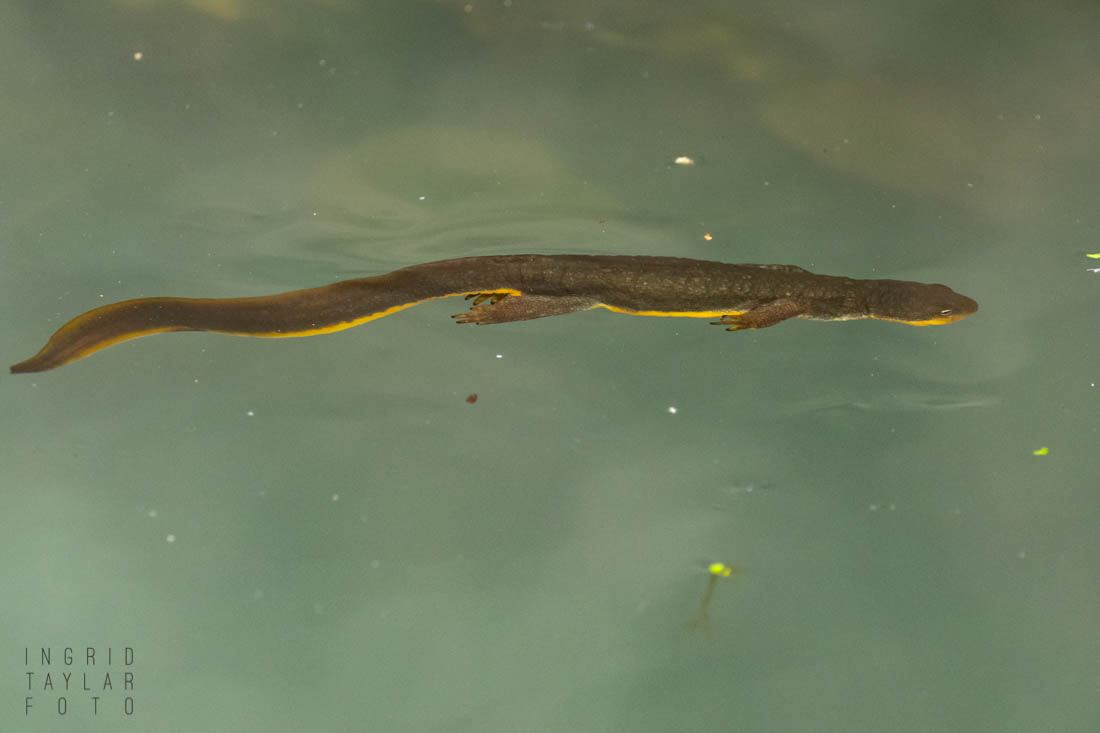
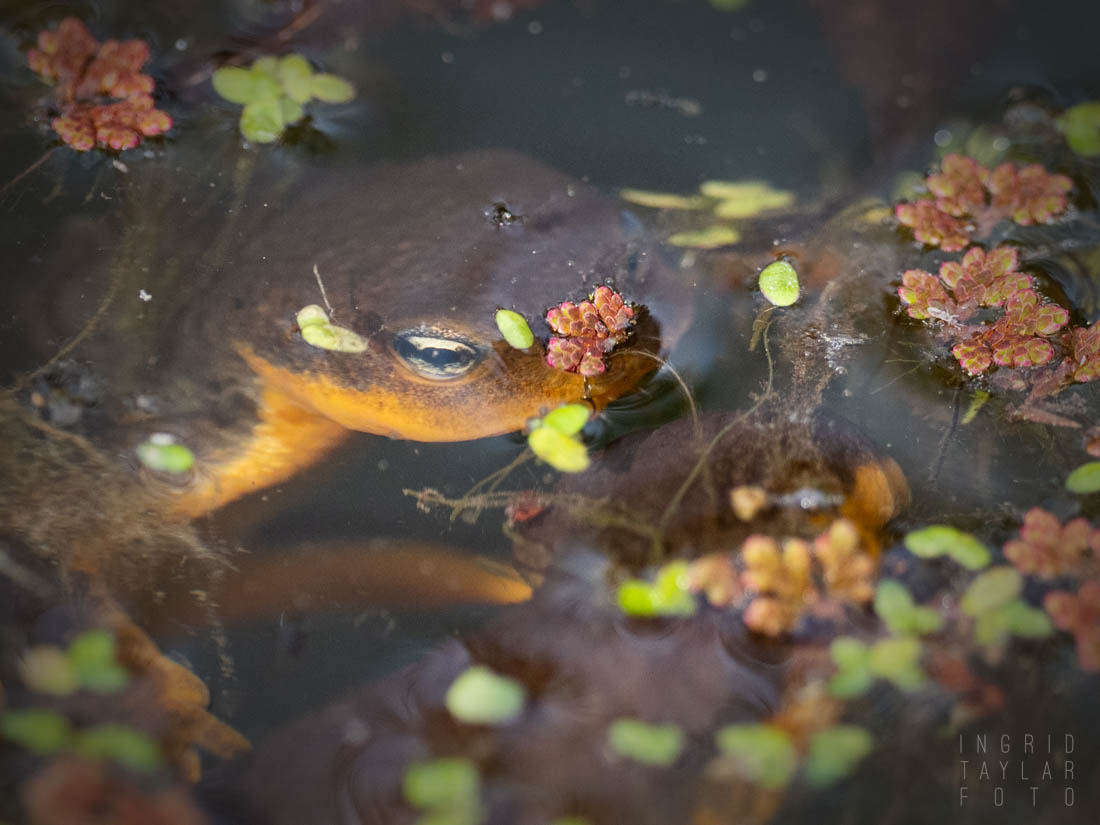
Photographed in 2010:
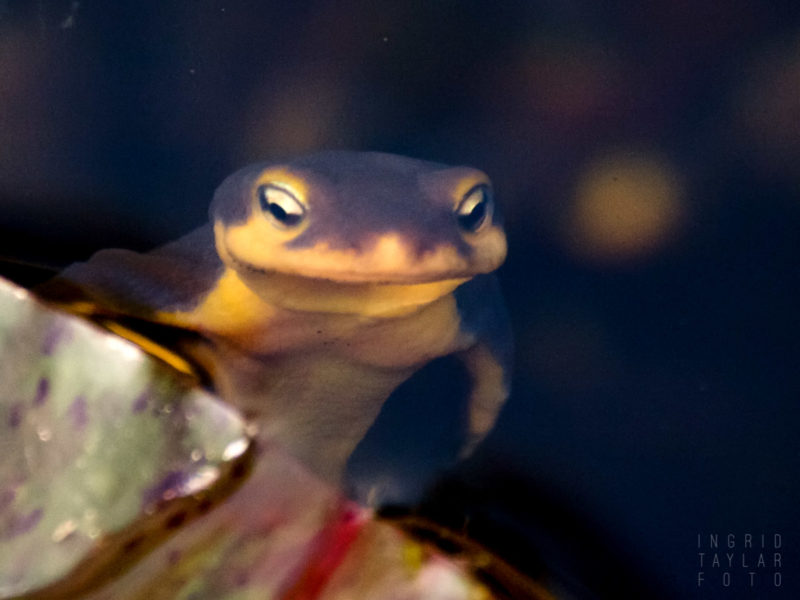
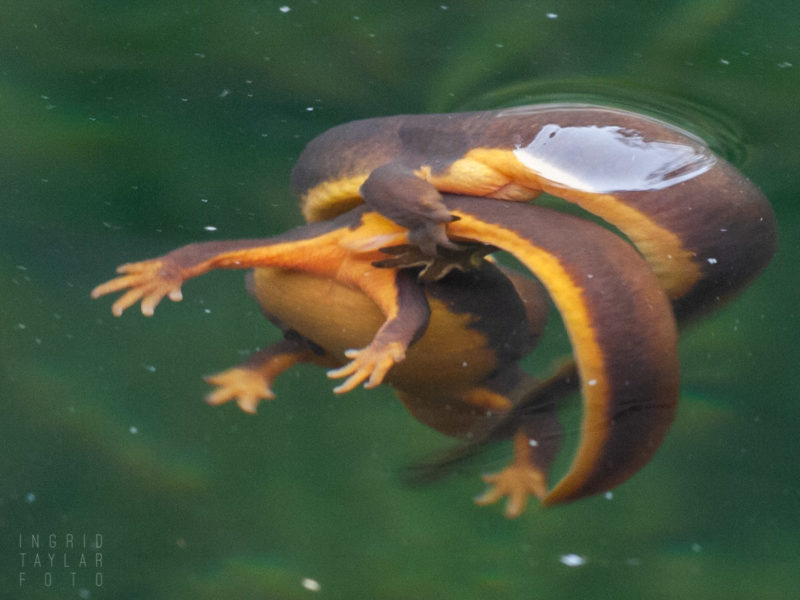
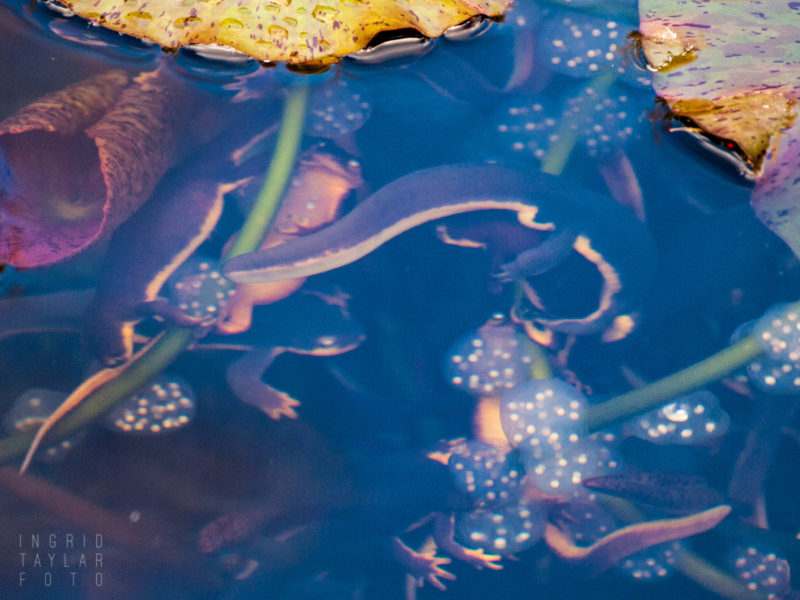
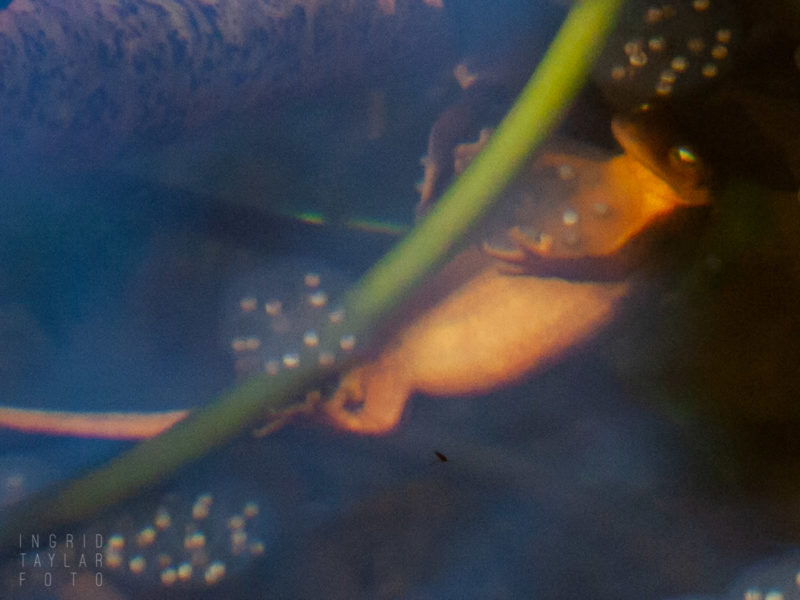
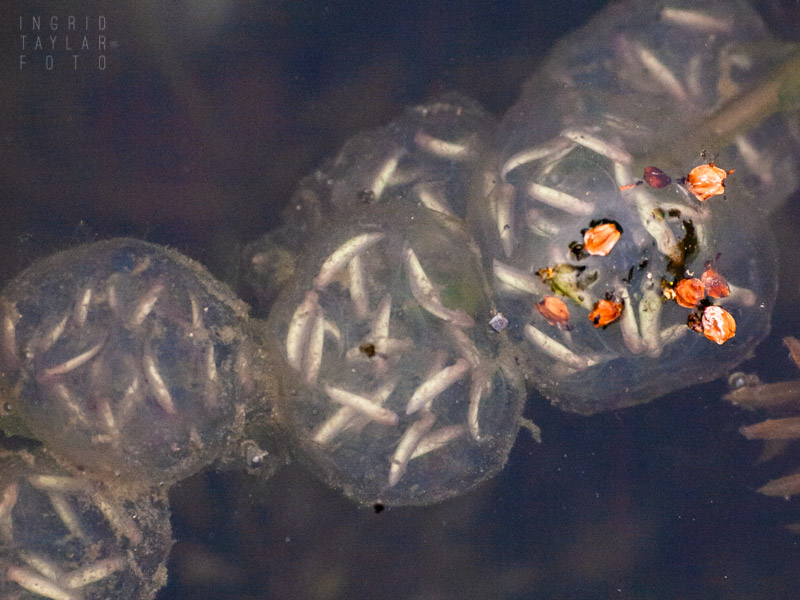
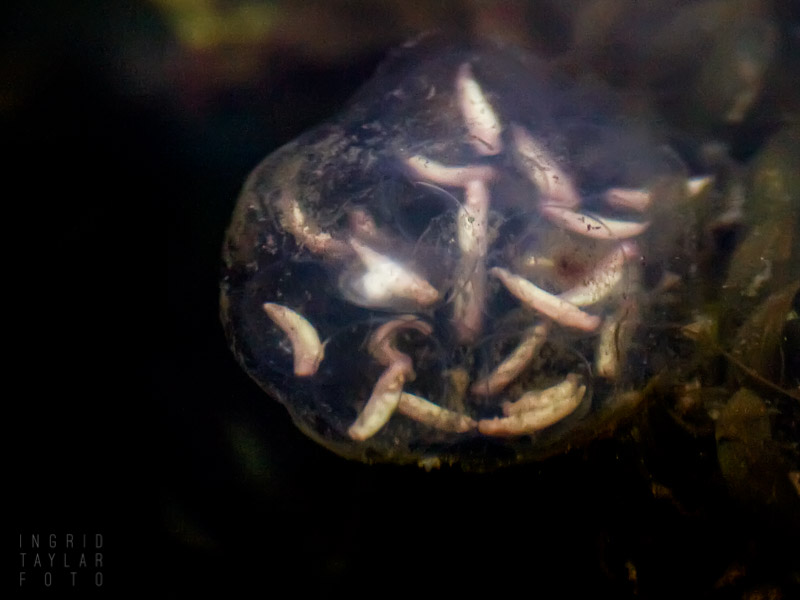
Newt Trivia:
- In the summer, newts engage in estivation — a hibernation-style summer sleep. They’ll burrow in mud or under logs to prevent desiccation (drying out)
- Male newts arrive at mating grounds first and also depart first
- Young newts stay at the breeding grounds until the end of the warm season, at which point they’ll move to terrestrial grounds until they reach maturity (in a few years)
- California Newts can reach 20 to 30 years of age . . . provided they avoid SUVs.
- Rough-skinned newts are the most toxic. California Newts are about a tenth as toxic as the rough.
Edited to add: Diane Sangster (in the comments below) provided a link to additional newt photos taken by her husband Bob at this same location. For a look . . .Stronck Photo Newts

[…] Yes, that’s right. Salamanders migrate. Where to? Good question. Apparently the great newt commute happens every winter as newts make their way to the rivers and streams to lay their eggs, then up […]
Wonderful pictures! I am a docent at the UC Bot Garden, and we show the Japanese Pool newts to hundreds of school kids, usually Mar to May. I have not explored the hills to see where they come from. Do you know how many miles they travel per day?
Frank O.
Frank, thanks so much for the comment. I don’t know how many miles they travel, but I’m hoping you might have that information. Any distance seems amazing to me, given the hurdles I’ve seen them overcome on their journeys.
I’m living in Seattle for a time, but the UC Botanical Garden is one of my favorite natural enclaves when I’m in the Bay Area. I’ve been at the Pool when docents have come through with children. What an extraordinary opportunity for them and for all of us. Thank you!
Thanks for the really interesting Newt info. We love these little creatures. Last year we went to the UC Botanical Garden and saw the Newt party. It was fascinating. The UC Botanical Garden is a beautiful place to spend time. Your photo of the Newt with the egg masses is amazing. Here is a link to some pictures my husband Bob took at the pool including one showing a Newt egg sphere taken a bit later. https://www.stronckphoto.com/reptiles/japanese-pool-at-uc-botanical-garden/
Diane, first, what gorgeous photos by Bob. The egg sphere shot is absolutely amazing.
I love this comment from Bob’s mission statement: “…. my intent is to honestly depict my subject in the context of their place and ideally, in a manner that evokes an emotional response.” I couldn’t feel more connected to that idea. Even though there is, and ought, to be some attention to artistic finesse in photos, there is so much pixel-peeping these days as to detract from this very basic notion: a photo can tell a story and evoke genuine feeling, even in its imperfection. I’m always struck by this as I look at images taken throughout the photo age, and how often, the most poignant are ones that would probably be torn apart by critics on today’s photo boards.
Aren’t the newts spectacular? It was through watching them that I also met a resident aquatic garter snake. I noticed him (or her) in the photo series by Bob. I’m in Seattle for a time and I miss the garden, one of my favorite photographic haunts. I appreciate you stopping by to remind me of the bounty of home in the Bay Area.
[…] post: The Great Newt Commute) Loading … 1 […]